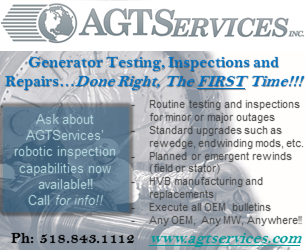With outage season in full swing, Greg McAuley, CTO of TRS Services and lead consultant at sister company GMW Consulting, shares his decades of industry experience below in the post-outage checklist he developed for owner/operators of gas and steam turbine/generators. Post-outage reviews and records are particularly important, McAuley says, because you already paid for the knowledge gained and don’t want to repeat any errors in judgement that might have been made.
Priority No. 1 after celebrating your outage success is to ensure all vendors—in particular, those service providers participating in the inspection, repair, upgrade, etc, of HRSGs, high-energy piping systems, and gas and steam turbine/generators—have completed and submitted their outage reports while memories are still fresh. McAuley suggests you have the reports within a month or two after work is completed.
Reports received, the next step is obvious: Read the reports thoroughly, jotting down questions for follow-up with vendors, noting where clarifications are necessary. Next, load pertinent data into your CMMS and other systems/databases. Review recommendations made by service providers, factoring pertinent comments into the plan for your next outage.
In parallel with your outage review, ensure all components removed from plant equipment are accounted for and their locations are known. Aim for completing the post-outage inventory in less than six months. The timeline may sound generous but it really is not, because the following work is involved:
- Repair versus scrap assessment. Segregate from the repairable spares, parts damaged beyond repair and those that have reached their retirement dates based on service hours or starts.
- Schedule repairs. Decide what parts to repair, and when. McAuley suggests that if you do not have a risk-based inventory management plan, this would be a good time to develop one. Keep an open mind on schedule: Depending on inventory and power demand, you may want to delay or accelerate repairs of critical spares.
- Develop the necessary RFQs.
- Evaluate the quotes received and award inspections. McAuley notes that peer and/or consultant review can help here because no two repair vendors think or act alike.
- Follow the repair effort closely, paying particular attention to assure specifications and dimensions are met and verified by internal or external experts.
- Return repaired parts to inventory.
- Don’t forget the consumables. A list of consumable hardware requiring replenishment should be provided by the maintenance contractor or warehouse supervisor. This can be done to the same time schedule as capital parts.
Safety. Goal for incorporating safety lessons learned into the plant’s procedures should be three months or less. Pay particular attention to the following:
- LOTO issues.
- Performance of dedicated safety personnel.
- Rigging and lifting assessments; factor findings into future lift plans.
- Results of safety audits.
- Results of toolbox meeting audits.
- Communicate audit results and resulting procedural changes to staff.
Outage performance. Review how everyone performed during the outage and how plant contractor personnel can improve going forward. Budget up to three months for this effort.
- Review and discuss the outage scorecard.
- Reassess manpower requirements.
- Identify bottlenecks encountered.
- How did safety impact schedule?
Outage financial analysis. Four to six months typically is adequate for this segment of the outage evaluation.
- Quantify and qualify extra work: Should it have been part of the original work scope?
- Manpower loading and tooling: Could the work have been done with fewer people? Would more personnel have been better?
- Quantify surprises: How could surprises have been avoided by spending less than the extra impact of them?
Post-outage data analysis. Findings can impact several of the other analyses being conducted, so this should have a high priority. Aim to have this effort finished within a month after outage completion.
- Tuning
- Vibration
- Performance
- Remaining or new equipment issues—for example, oil or air leaks.
Planning the next outage. Begin this task immediately and never stop.
- Base work scope on the type of outage.
- Identify additional scope from the results of the outage just completed.
- Incorporate safety and other lessons learned in RF Q documentation.
- Develop RFQs while experiences are fresh in everyone’s mind. Waiting contributes to forgetting and missing opportunities.
- Modify your plans as new information/data is uncovered or produced.





